Table of Contents
If your replacement windows are drafty, hard to open, or exhibit visible damage, it’s time for some maintenance. Look for cracks or warping, as these issues can significantly impact energy efficiency and security. Additionally, condensation between window panes indicates seal failure, which needs immediate attention. Your windows should also provide noise insulation; excessive sound penetration suggests they may not be functioning properly. Don’t forget about the visual appeal—faded or mismatched windows can detract from your home’s curb appeal. Promptly addressing these window issues can improve comfort, enhance energy efficiency, and increase your property’s value. Discover more about effective window maintenance for optimal performance today!
Key Takeaways
- Windows over 15 years old may show signs of inefficiency, such as draftiness or condensation, indicating a need for replacement.
- Operational difficulties like sticking, squeaking, or difficulty opening windows suggest worn hardware or aging mechanisms that require attention.
- Visible damage, including cracks, warping, and peeling paint, can threaten energy efficiency and security, necessitating repairs or replacement.
- Drafts and air leaks around windows can lead to significant heat loss, impacting comfort and increasing energy bills.
Age of Your Windows
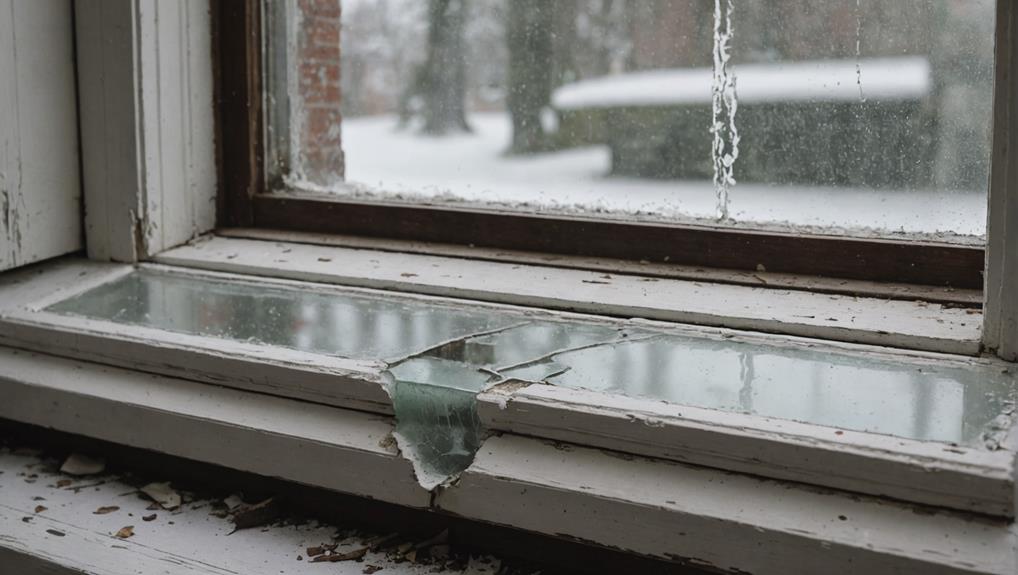
If your windows are over 15 years old, it’s time to start paying attention to their condition. The age of your windows greatly impacts your home’s energy efficiency. Typically, windows have a lifespan of 15-20 years, and older windows may not provide the insulation you need. If you notice signs to look for, like draftiness or condensation between the panes, it might be time for window replacement.
Older windows, especially single-pane varieties, often lead to increased energy costs. Modern windows, with double or triple-pane options, offer better insulation and energy efficiency, helping you save money on heating and cooling. If your windows are pushing the 20-year mark, consider investing in high-quality windows that will enhance your home’s performance and curb appeal.
Regularly evaluating the condition of your windows can help you identify when it’s time for an upgrade. If you’re experiencing higher energy bills or see physical wear, it’s wise to explore window installation options.
Don’t wait until problems become severe; being proactive can guarantee your home remains comfortable and energy-efficient.
Operational Difficulties
Operational difficulties with your windows can signal underlying issues that may require immediate attention or even replacement. If you find your windows are difficult to open or close, it might indicate worn hardware or structural concerns.
Sticking windows can be caused by dust build-up, tight springs, or roller issues, all of which can compromise functionality and might lead to extensive repairs or the need to replace your windows altogether.
Additionally, if your windows won’t stay open, this could be due to broken balances, highlighting a malfunction that might necessitate full window replacement for proper operation. Frequent squeaking during use is another red flag, signaling wear and tear on window components that can cause operational difficulties over time if not addressed.
Double-hung windows, known for their efficient ventilation, should open smoothly. Any difficulty here often reflects aging mechanisms and could indicate it’s time to replace your windows.
Addressing these issues sooner rather than later can help maintain safety and ease of use in your home. Don’t ignore these signs; taking action can save you time and money in the long run.
Energy Efficiency Issues
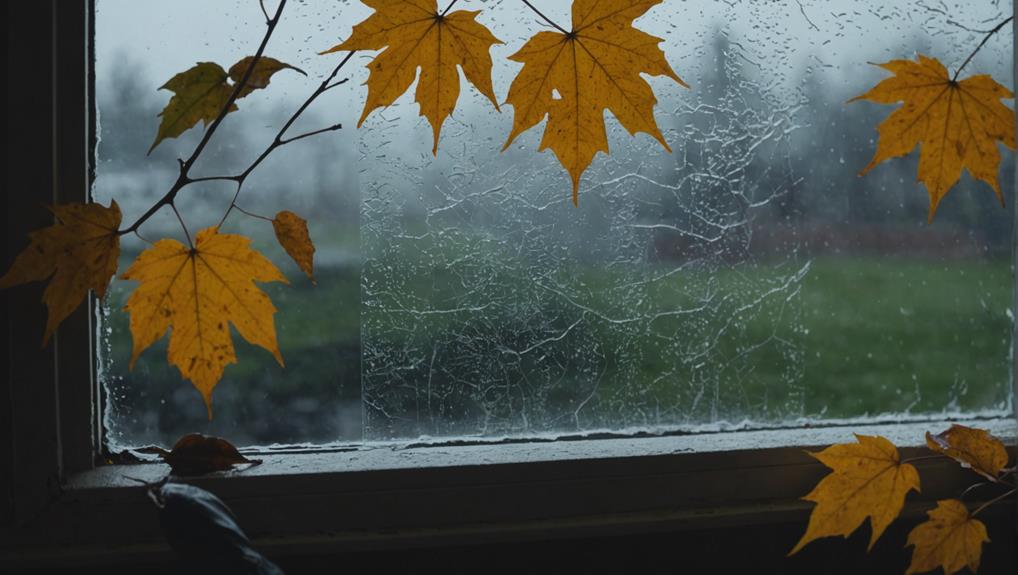
Difficulty with window operations can often lead to increased energy bills, signaling that your windows may be losing their efficiency. If you notice drafty windows, it’s a clear sign that you’re facing energy efficiency issues. These gaps can allow for 10-20% of heat loss, which dramatically increases your HVAC workload, resulting in higher energy bills.
Older single-pane windows usually offer poor insulation compared to modern double or triple-pane options, making them less effective at keeping your home comfortable. If you see condensation between the window panes, it’s likely a sign of seal failure, compromising insulation and leading to moisture problems and rising energy costs.
Upgrading to Energy Star-certified windows can be a game changer; they can reduce energy bills by approximately 12%. Investing in these replacement windows not only enhances your home’s energy efficiency but also minimizes the stress on your heating and cooling systems.
If you spot any of these signs, it’s time to evaluate your windows’ performance and consider making necessary upgrades for a more energy-efficient home.
Visible Damage Signs
Visible damage signs like cracks, warping, and chipping on your windows can threaten both energy efficiency and security. These visible damage signs aren’t just cosmetic; they can lead to serious issues.
Cracks in the glass or frame can allow air leaks, reducing insulation effectiveness and driving up your energy costs. Warping in the frame may indicate moisture damage, which can also manifest as mold growth or water stains around the window.
If you notice peeling paint or sagging frames, it’s a clear sign that moisture has infiltrated, and immediate action is crucial to avoid further deterioration. Water stains are particularly concerning, as they suggest ongoing water infiltration that could lead to structural weaknesses.
Regularly inspecting your windows for loose or rattling components can help you catch these visible damage signs early. Addressing issues promptly can prevent costly repairs down the line and guarantee your windows continue to enhance your home’s energy efficiency.
Don’t wait until problems worsen; keep an eye out for these signs to maintain both your windows’ functionality and your home’s safety.
Drafts and Air Leaks
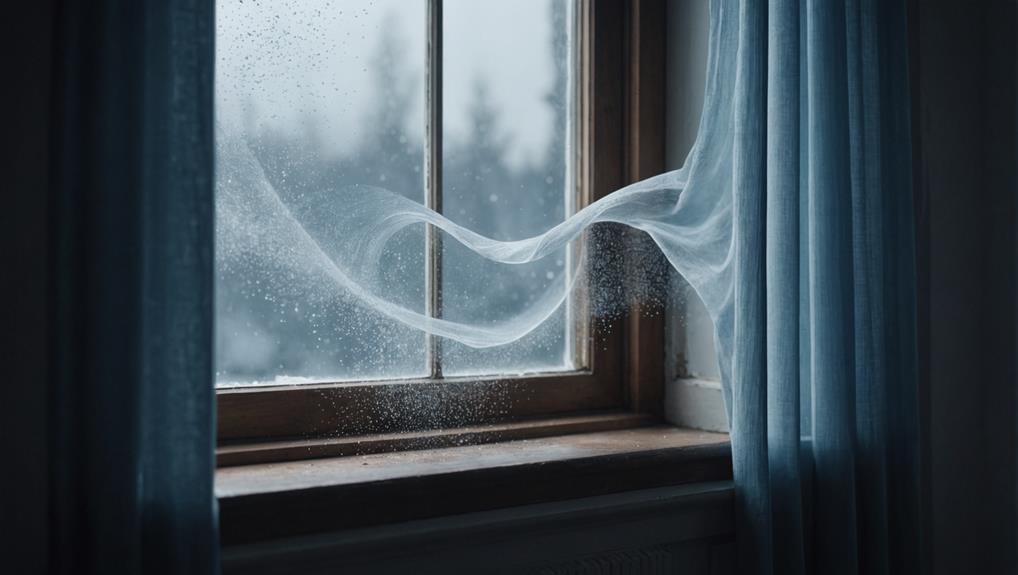
Drafts and air leaks around your windows can greatly impact your home’s comfort and energy efficiency. If you notice drafty windows, you might be dealing with considerable heat loss, which can account for 10-20% of your home’s overall energy waste. This inefficiency forces your HVAC system to work harder, potentially increasing your heating and cooling costs by 5% to 15% annually.
To identify these air leaks, perform a simple test with a candle or incense stick; if the flame flickers or the smoke drifts, there’s likely a leak. Ignoring these drafts can lead to more severe humidity issues and mold growth, which can harm your indoor air quality and structure.
One of the best solutions is to replace windows with energy-efficient models, which considerably improve insulation and reduce energy expenses. Investing in quality windows not only boosts your home comfort but can also provide a great return on investment when it’s time to sell.
Don’t let drafts compromise your living space; take action to seal those leaks and enjoy a more comfortable environment.
Noise Levels and Insulation
Excessive noise levels can be a clear sign that your windows aren’t providing the insulation you need for a peaceful home environment. If you live in urban areas or near high-traffic zones, you might notice that outside noise seeps in, disrupting your comfort.
Older single-pane windows typically have a low Sound Transmission Class (STC) rating, allowing considerable sound intrusion. In contrast, modern double-pane windows improve sound insulation with STC ratings of 28-32, effectively reducing noise.
If you’re experiencing increased noise levels, it may be time to reflect on replacement windows. Upgrading to energy-efficient models not only enhances your home’s insulation but also diminishes indoor noise, leading to a more serene atmosphere.
For those in particularly noisy environments, specialty soundproof windows can achieve STC ratings up to 48, making them an ideal choice for peak sound insulation.
Emphasizing comfort, replacing windows can greatly improve your quality of life by reducing noise pollution, which can lead to better sleep and lower stress levels.
Don’t let outside noise compromise your home; assess your windows and think about upgrading for a quieter, more comfortable living space.
Aesthetic and Curb Appeal
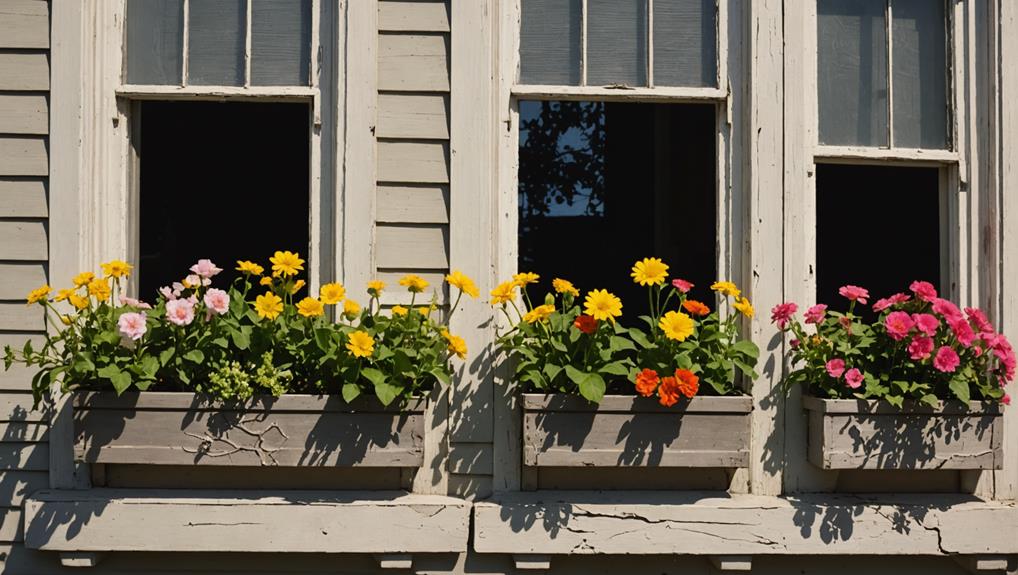
Outdated window styles can make your home look less appealing, diminishing its overall curb appeal and potentially lowering its property value. If you notice any of the following signs, it might be time to evaluate window replacement:
- Fading window frames: Discoloration indicates deterioration, affecting your home’s visual appeal.
- Condensation buildup: This obscures views and reduces natural light, impacting the overall aesthetic quality of your space.
- Outdated window styles: Mismatched or old designs detract from your home’s charm, making it less attractive to potential buyers.
- Limited customization: New windows offer a variety of modern designs and colors, allowing you to create a custom appearance that enhances your property’s exterior.
Renovation Considerations
When renovating your home, considering the replacement of old windows can’t only enhance energy efficiency but also elevate the overall aesthetic and value of your property.
Upgrading to modern window styles can greatly improve aesthetic appeal, potentially increasing your home value by an average of $13,766. During renovations, choose Energy Star-certified replacement windows to potentially reduce your energy bills by 12%, maximizing your cost savings in the long run.
You can also explore different window functions, like installing glass doors for patio access, which boosts natural light and airflow. If you decide to replace all your windows simultaneously, you’ll achieve consistent quality and design, leading to better energy performance throughout your home.
Additionally, selecting replacement windows with Low E glass can protect your furnishings from UV ray damage while keeping your indoor environment comfortable.
Incorporating these considerations into your renovations not only enhances your home’s functionality but also guarantees that you’re making a smart investment that pays off in energy savings and increased home value.

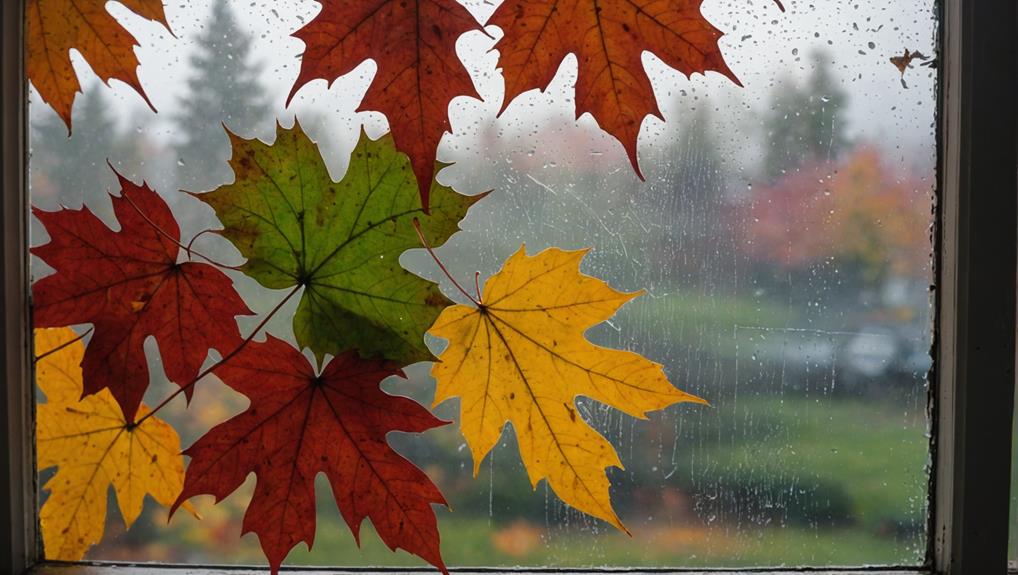
Leave a Reply